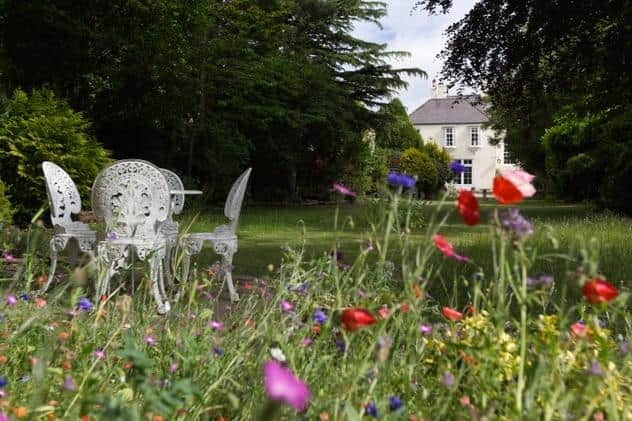Yorkshire’s hedgehogs deserve to be looked after and protected by more stringent legislation - GP Taylor
I am very privileged to live in a house with its own Georgian walled garden of just under an acre. Over the last few years, it has been transformed from a manicured showpiece to a nature garden of great diversity. The magnificent specimen trees still stand, but underneath, the bushes have been allowed to grow to provide cover for birds and animals of all kinds. Our resident peregrine keeps the pigeons under control and we have an abundance of native nesting birds and insects.
One creature that I knew was missing was a hedgehog. Food would be put out but never eaten. That was until I visited Fadmoor and found a hedgehog stuck in an electric fence. After several shocks, I managed to free the creature. It was thin and dehydrated so it was taken home, fed and released into the garden. ‘Sparky’ was a greedy house guest and was soon at full weight, making his way back into the wide world.
Advertisement
Hide AdAdvertisement
Hide AdBelieve it or not, hedgehogs in urban areas are succeeding more than those in the countryside. Within a week or so, a friend brought another hog to the house. This creature was recovering from lung worm, a fatal condition that they contract from eating slugs and snails – their main source of food. ‘Wheezer’, ate like a horse and even though we like to soft release the hogs, he has decided to stay and is a regular at the back door. There are now five hogs that come and go in our garden and several hog-hotels have been created for them to hibernate. It is indeed hog-topia.


Sadly, that is not the life for most of these creatures and I am very concerned.
Hedgehogs are currently listed as vulnerable on Natural England’s red list. They face threats such as habitat destruction, road accidents, and predation. Many are killed for ‘fun’. The RSPCA found that incidents of abuse, including beating, improper killing, mutilation, and neglect increased from 2011-15 and 2016-20. Hedgehogs are also one of the predators trapped as part of lethal control measures to protect game birds on shooting estates.
Data from The State of Britain’s Hedgehogs, states that rural populations declined by up to 50 per cent between 2002 and 2017.
Advertisement
Hide AdAdvertisement
Hide AdInformation from the Mammals and Roads Survey suggest that 200,000 of these creatures are killed on the roads. That is a staggering amount considering that it is estimated that there are under 900,000 hogs in the UK. Imagine, if one day, these beautiful creatures that are often voted as Britain’s favourite mammal became extinct. More has to be done to stop them dying out.
Hedgehogs are protected under Section 6 of the Wildlife and Countryside Act 1981, in reality, this offers little protection. The Act is quite complicated and without going into the law, hedgehogs need to be covered under Section 5, a tougher part of the Act, which would protect them from intentional killing and the destruction of their habitat.
Further protection would also cease the growing trend of hedgehogs being kept as pets.
Having over-wintered a baby hedgehog too small to survive hibernation, I can assure you they do not make good pets as they stink and are very antisocial coming out at night and grunting like a pig. Hedgehogs also carry fleas, ticks, and salmonella, wonderful things to invite into you home.
Advertisement
Hide AdAdvertisement
Hide AdThe great thing is that everyone in Yorkshire can do something positive to help the hog. Modern gardens are usually fenced and hogs like to roam up to a mile at night looking for food and our garden fortresses keep them out.
All we must do is cut a small hole in the bottom of the fence and you will soon get a visit. They are linear hunters and like to follow walls and hedgerows. Hogs love to eat slugs and snails – the enemy of the gardener, so they will be doing you a favour. We can make a hog-diner, an upturned box with an entrance hole and put cat food and water inside. (Please, no milk or bread.)
Small branches and leaves can be left in an out of way corner to provide cover for hibernation, wildflowers can be grown to attract insects. As bonfire night approaches, build your fire on the day and check it for hiding hogs.
Ultimately, urban hedgehogs might be the only group that survive. The loss of hedgerows in the countryside and predation by badgers may mean fewer rural hogs to a point where they won’t recover.
Advertisement
Hide AdAdvertisement
Hide AdHedgehogs are ‘the canary in the mine’ and harbingers of the loss of other native species. Yorkshire has a proud history of caring for endangered animals.
Our hedgehogs deserve to be looked after and protected by more stringent legislation and education.
GP Taylor is a writer and broadcaster who lives in Yorkshire.